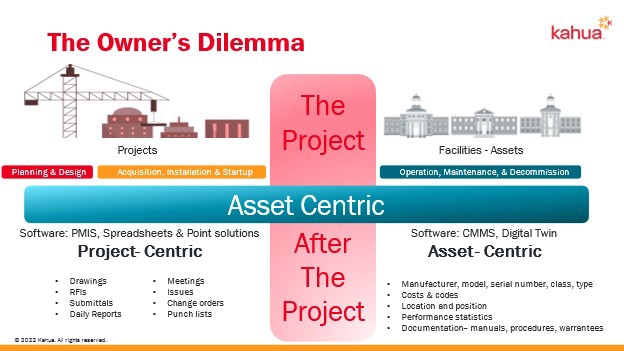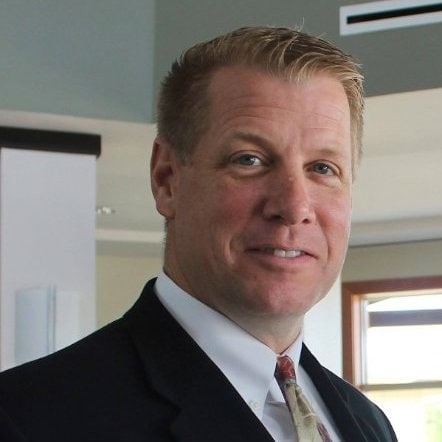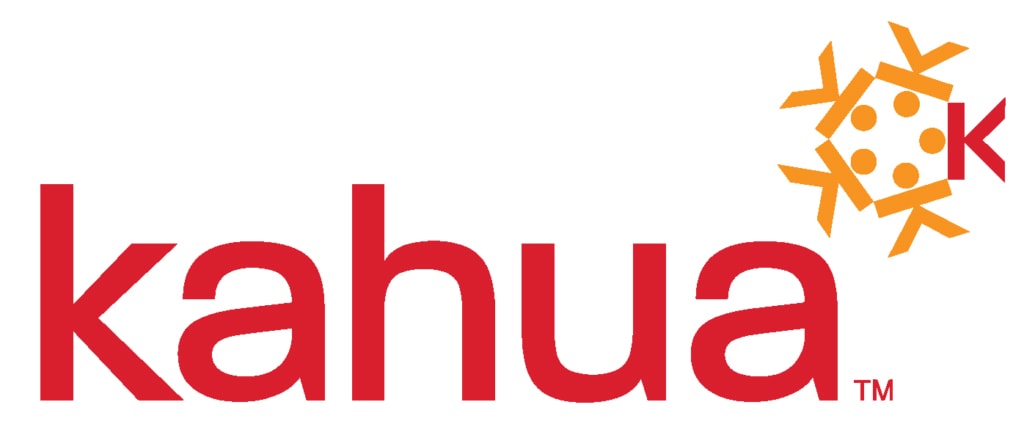By Nicholas Johnson, Chief Evangelist, Kahua

For over 40 years, I have been involved in the project planning, design, and construction of facilities and infrastructure, including stadiums, roads, factories, utilities, schools, hospitals, and even a water park or two. I’ve worked on projects for cities and counties, the U.S. Army and Navy, and for so many private owners that I would not be able to remember them all. This year alone, I will visit project sites in six different countries.
As diverse as this list is, there is one thing that all these projects have in common; they are all temporary. As important as our work is – and it is very important – it is equally temporary. This is a fact that is inspiring the CURT community to evolve our way of managing project information.
We call them buildings or facilities, roads or bridges, etc., but to an owner, they are assets. And they also contain assets. Roads have signals and signage, and guardrails. Buildings have roofing systems and boilers and switchgear, and cooling towers. These assets have lives that span decades, while a construction project may only take months to complete.
At CURT’s September gathering in Las Vegas, Kahua President and Founder Brian Moore presented on a topic that has captured the attention of construction owners all across the United States – Asset Centric Project Management – which is a way of managing a project with the eyes of the asset owner.

He said, “For design, planning, and construction, the project accounts for 10 to 20% of the lifecycle cost of an asset. An owner’s investment after the project accounts for 80 to 90% of its cost. It is time that technology providers started thinking like an asset owner.”
Throughout the many phases of a project, before an asset goes online, we collect information. We may start with real estate or local code information. We create financial plans for our project and write contracts to hire architects, engineers, all sorts of technical experts, and teams of contractors. We create design plans and models and long lists of items that must be procured. We then begin to acquire these things that are and will become assets in the owner’s portfolio.
When assets are acquired, they come with information that the owner will need – not just for the construction process but for the useful life of the asset.
Consider the life of an air conditioning unit. It starts as a request; then it becomes part of a purchase order, then it is acquired and moves through the supply chain. It finds its way onto the job site. It is installed, in a certain place, by a certain installer, under specific conditions. Later, it will be commissioned by another party. Finally, the keys to the building are handed over to the owner. There is a warranty period, but otherwise, this is the end of its story. But only for the project team.
Our air conditioning unit will live in the owner’s collection of assets for decades. It will need to be maintained. It will have components that need to be repaired. It may get moved to a different place in the facility, or it may get moved to a different facility altogether. It may go through a recall and need to be replaced. And, at some point, years down the road, it will surely be retired and replaced.
To make the best use of their assets and the dollars that are budgeted for them, owners deploy technology to assist in planning, allocating, maintaining, and operating them. But these tools require the information about them that we collected along the way. Traditionally, this has required a “project after the project” to once again compile this information and load it into the appropriate tools.

Using an Asset Centric Project Management toolset to write smart contracts, build smarter models, and collect useful information in a manner that owners can use immediately at handover will eliminate this extra effort once and for all and improve forever the value we designers and builders provide to construction owners.
For several months, we’ve shared this vision with CURT owners and owner reps. The response has been incredible. Jim Ellis, CURT President and Retired VP of Global Construction at Microsoft, said, “Our industry continues to look for fusing and integrating advanced technologies across the asset lifecycle, from build to operate and maintain, to leverage optimum value for key stakeholders. I am delighted to see companies like Kahua, PrairieDog, and CIR Analytics get it and work toward advancing this for our industry. I can’t wait to see more.”
Plan to join us at the CURT National Conference in San Antonio next February 6-8, 2023. There Kahua and other CURT member companies will demonstrate asset-centric project management, following the information of an asset from conceptual design through hand-over to the owner. Be sure to get a copy of The VOICE magazine in February, where we will highlight the same story and give you some additional owner feedback.


Nicholas Johnson has over 40 years of experience in the design and construction industry, including 15+ years combined with Autodesk and Trimble. Starting as a building design engineer with General Dynamics and Heery International (now CBRE), his career grew around the latest technologies. He now has the honor of serving the AEC industry as Kahua’s Chief Evangelist.
